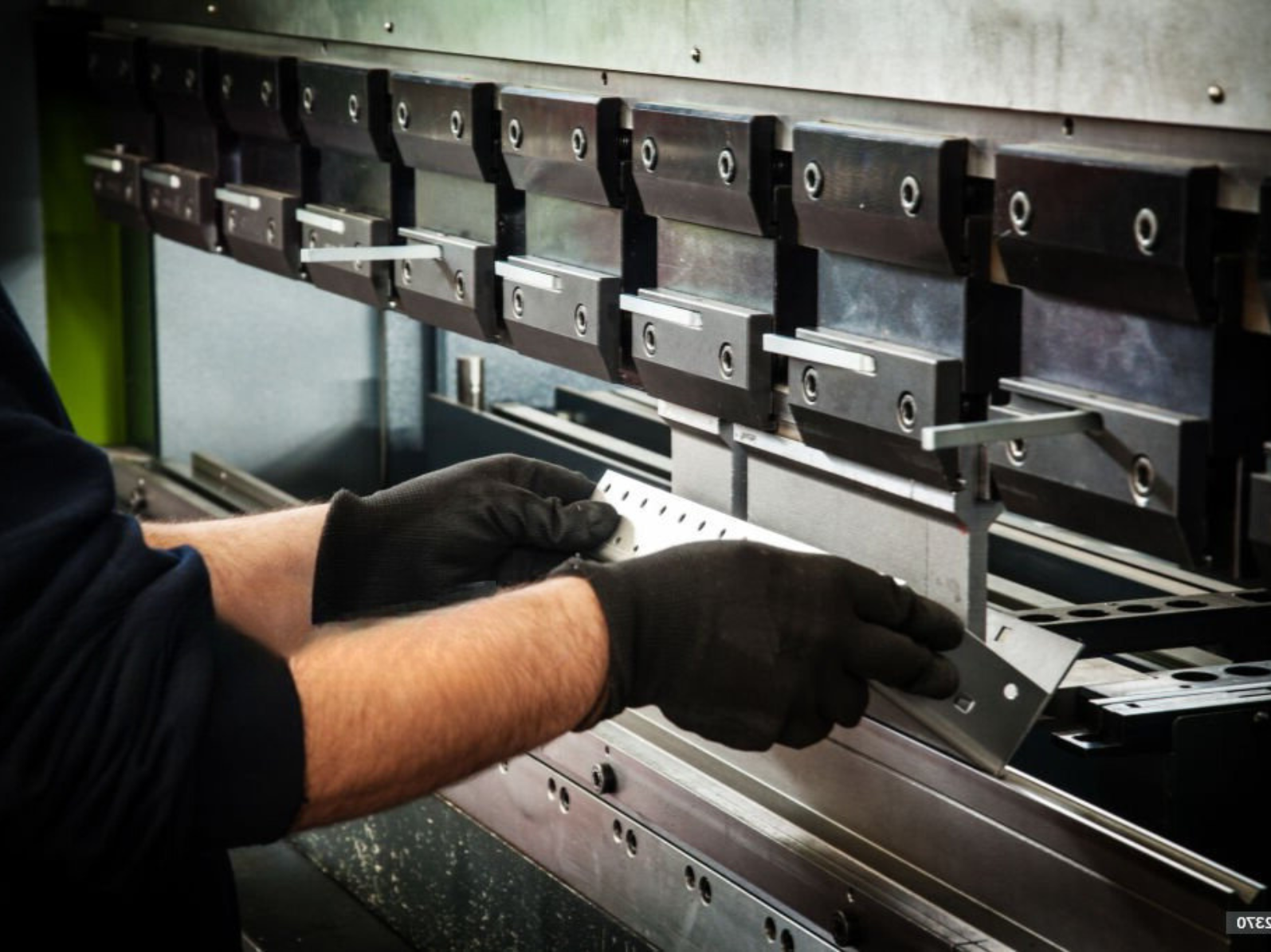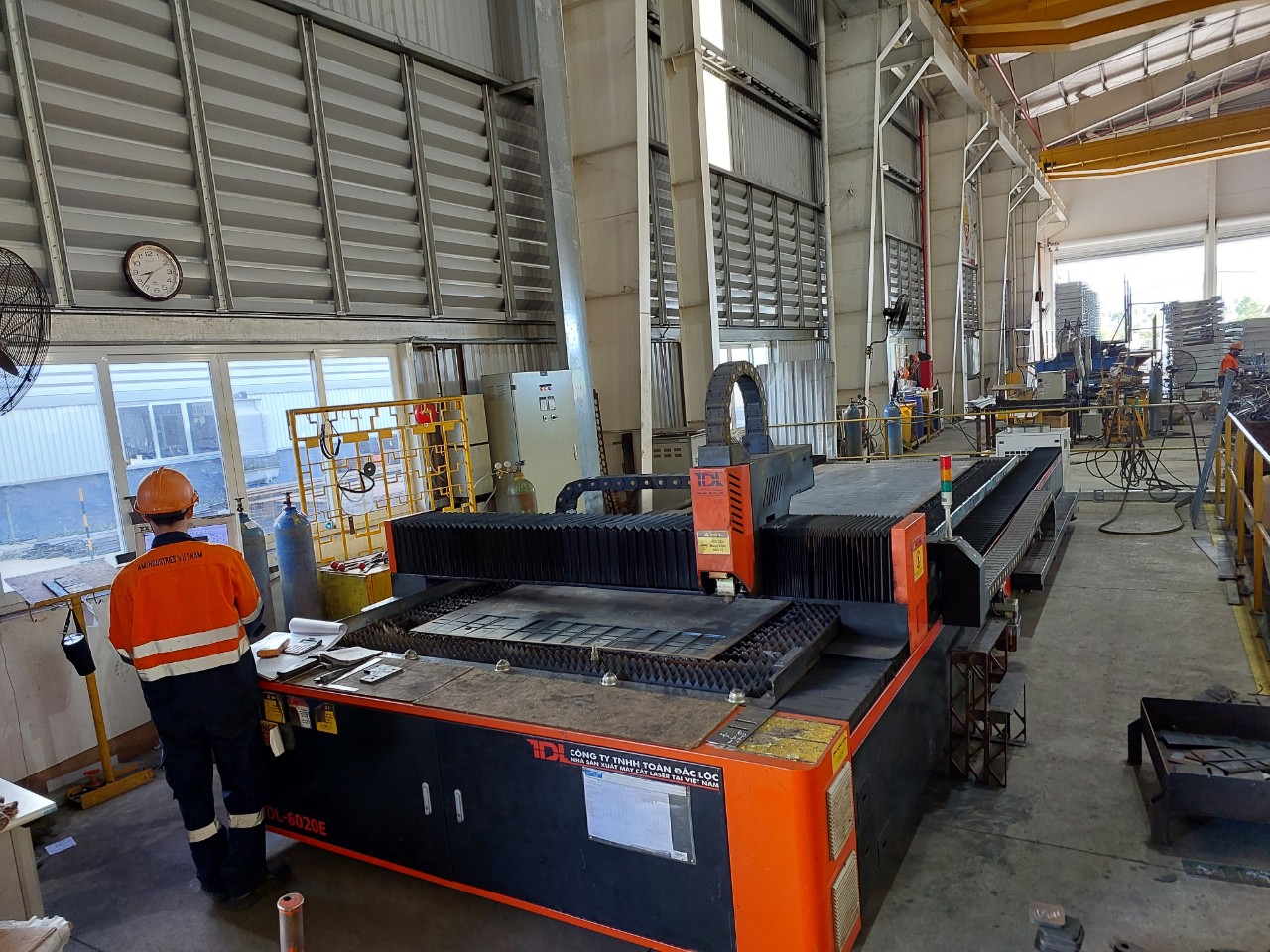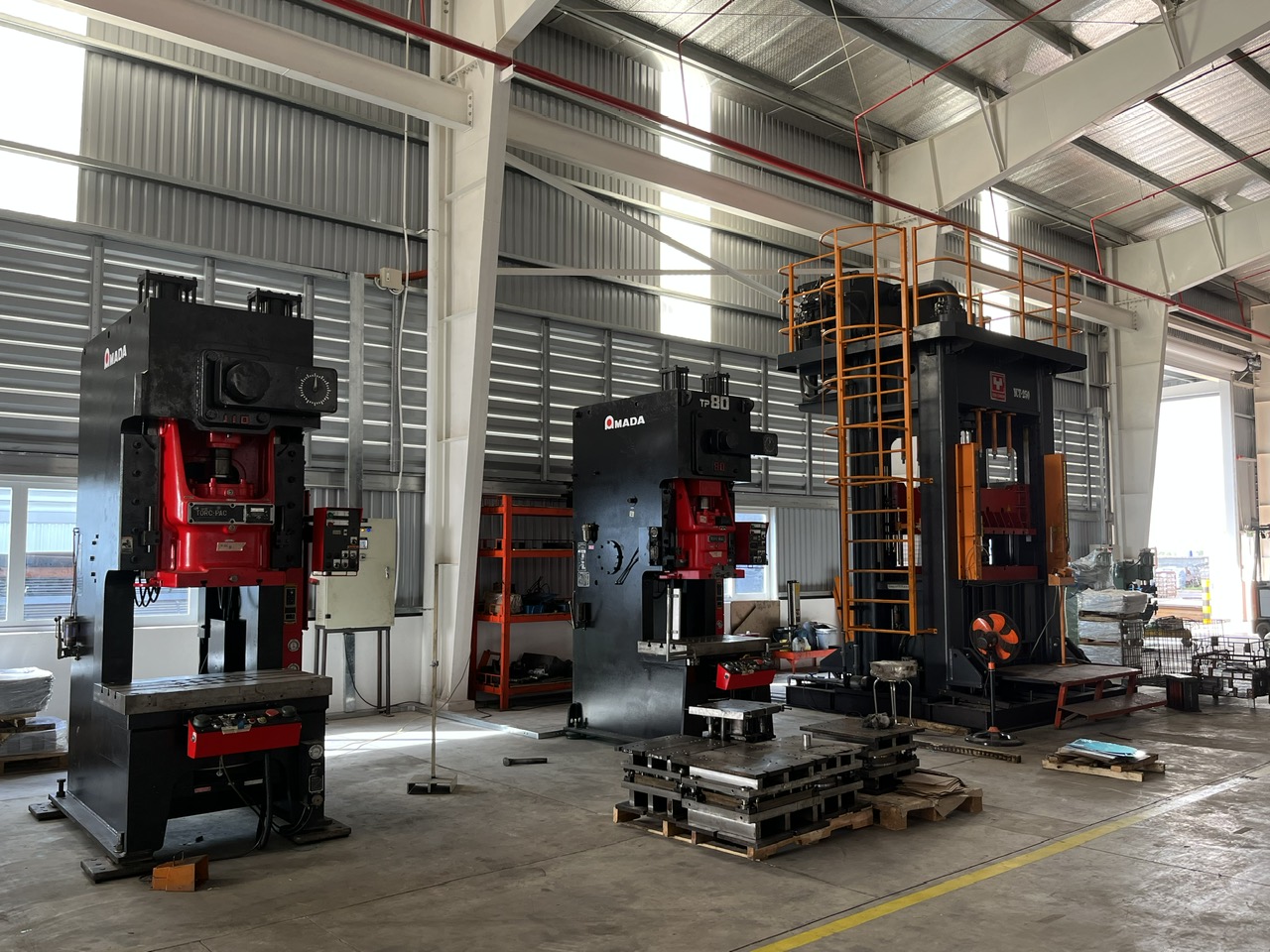Metal stamping is an important technical process in metal fabricating and manufacturing. This technique helps shape metal with small details, complex shapes and high precision requirements.
To meet customer needs, service providers need to understand the types of machines used in the metal stamping process and how they are used in order to understand their functions and accurately meet technical specifications requirements and appearance of components.
AM Industries specializes in providing custom sheet metal stamping services to a variety of industries and services worldwide. We have researched and provided you with information about the types of machines and components involved in the metal stamping process and how custom metal components are created through the article below.

What is Sheet Metal Stamping?
Metal stamping is the process of using dies and stamping pressing machines to cold form flat sheet metal into many different forms. The material to be stamped will be placed to be stamped between the die or machine sections, where the use of pressure will form and shear the material into the desired final shape for the product or part.
Different types of sheet metal stamping techniques
Four-slide stamping (or multi-slide stamping)
This process have four or more horizontal slides in the machine to form workpieces from multiple directions, which are used to bend or twist complex shaped components.
Progressive Die Stamping
Progressive die stamping is a metal forming process that uses an automatic feeding system consisting of multiple stations performing each different operation, arranged in a progressive manner. This method involves several operations such as punching, die casting, bending and other ways to transform raw metal, making it suitable for high-volume production in various industries such as automotive, electronics and appliances.
Transfer die stamping
Similar to progressive die stamping, however parts are moved from station to station using a mechanical conveying system, or manually. The molds are arranged in a row to form a production line, with each station performing one or more operations until that part is completed.

Compound Die Stamping
This is the fastest production technique for stamped items, consisting of a die with multiple cutting operations in a single press stroke. They are often used for high production runs.
Deep Drawing
This is a process where a punch displaces the metal into the die cavities. The metal flow is radially drawn into a forming die by a mechanical action. Deep drawing is used to create items like cans, tanks, and vessels.
Learn more about metal stamping for beginners here!
The Role of Sheet Metal Stamping Machines
The rules for using metal stamping machines are quite simple, however, depending on volume and technical requirements, each type of machine has different uses. In general, the rules for operating these devices are quite simple, which is to use pressure to deform metal.
Different types of sheet metal stamping machines and their uses
Laser cutting machine
These machines use a laser to cut materials and are typically used for industrial manufacturing applications. They are incredibly powerful tools for quickly cutting holes into sheet metal plates. Unlike a stamping machine or press brake, a laser cutting machine does not rely on mechanical force to penetrate metal. This eliminates many of the microscopic fractures and stress marks that might weaken a piece of sheet metal that was bent mechanically

Tapping machine
A tapping machine is a specialized machine that facilitates accurate and efficient tapping of multiple holes. It is designed to operate a standard series of taps to cut internal threads into pre-drilled holes in workpieces. Tapping machines can be operated manually using a tap wrench, engaged using a drill press tapping machine, or employed in a manual or CNC machine tool setup.
Surface grinding machine
These machines produce a smooth finish on flat surfaces by removing a small amount of material using a rotating wheel.
Milling machine
These machines are used to cut and shape solid materials, such as metal or wood.
Mechanical presses
Mechanical presses can deliver the highest production speeds, specifically for simple, shallow-formed parts from coils of sheet metal. Mechanical presses are fast and efficient and can be depended upon to produce high volume production runs with consistent results in repeated cycles. Mechanical presses use a motor connected to a flywheel mechanism to transfer and store energy. These presses can be found in a wide range of sizes varying from 20-6,000 tons. Mechanical presses are typically used for progressive and transfer stamping. Many automotive, appliance and hardware components fall into this category.

Hydraulic presses
This machine do not possess the high production speeds of a mechanical press, however they do offer wider flexibility with variable stroke lengths, die opening space and pressure. The hydraulic press is often the most suitable option when producing parts with deep, complex shapes that involve a lot of material flow and are not reliant on production speed. Components such as tanks, cylinders and bowls are frequently manufactured using hydraulic presses.
Mechanical Servo presses
They deliver much of the variability of the hydraulic press, at production speeds approaching that of mechanical presses with the addition of finer control for stroke, slide motion, slide position and speed. The programmable additions allow for many different combinations that can work with a wide variety of dies, part types and production speeds.
Creating Sheet Metal Stamping Parts
When creating metal stamping parts, several factors must be considered, including:
- Material selection: The selection of the appropriate material is critical to the success of the stamping process. Factors to consider include mechanical properties, corrosion resistance, and cost.
- Design: The design of the part must be carefully planned to ensure that it can be manufactured using the stamping process. The design should consider factors such as material flow, die design, and tooling requirements.
- Tolerance: Tolerance refers to the allowable deviation from the specified dimensions of the part. Tolerance must be carefully considered during the design and manufacturing process to ensure that the finished part meets the required specifications.
Here is a detailed explanation of the step-by-step process of creating a metal stamping part using a metal stamping machine:
Design and Tooling Preparation:
The process begins with meticulous design and engineering, where the desired part geometry is carefully planned1. Stamping professionals consider multiple factors such as material properties, die design, and tooling requirements1. Once the design is finalized, it is plotted using CAD (computer-aided design) or CAM (computer-aided manufacturing) software to ensure accuracy1. After the tool design is completed, the specialized tooling (such as blanking dies, forming dies, and piercing dies), is fabricated using a variety of machining tools and technology.
Material Preparation:
Based on the requirements of the part, specialists select metal sheets or coils1. Considerations include mechanical properties such as strength and ductility, as well as other factors like corrosion resistance, conductivity, and cost1. The selected material should be compatible with the stamping process and the desired part’s functionality.
Feeding:
The selected materials undergo preparation processes like cutting, slitting, and leveling to obtain the proper dimensions and flatness necessary for stamping1.
Stamping:
At the core of metal stamping lies the stamp press, a component responsible for applying the necessary force and pressure to mold the metal sheets or coils into the desired shape or profiles1. This powerful machine incorporates specialized tooling known as dies, which performs a variety of stamping operations on the metal1. By carefully controlling the movement of the press and the interaction between the dies and the metal in the production line, the stamping process brings forth remarkable transformations in the shape and structure of the material.
AM Industries – Your Custom Sheet Metal Stamping Manufacturer
There are thousands of companies in the automotive, aerospace, mining, medical and other markets looking for metal stamping service providers around the world to supply their components. . As the global market grows, the need for large quantities of complex parts produced quickly is increasing.
AM Industries Vietnam is Asia‘s leading metal stamping service provider, using a combination of high speed presses, progressive dies, 4 slide and multi slide presses, we provide solutions The most optimal and cost-effective solution for metal stamping production on demand in large quantities meeting international standards such as AU, NZL, EU, USA…

We offer a wide range of stamping parts
- Auto Spare Parts
- Stamping Metal Parts (Aluminum, Stainless Steel, Galvanized Steel, Brass…o
- Long Run, High Speed Stamping
- Progressive Die Stampings
- Learn more about steel component manufacturing service

